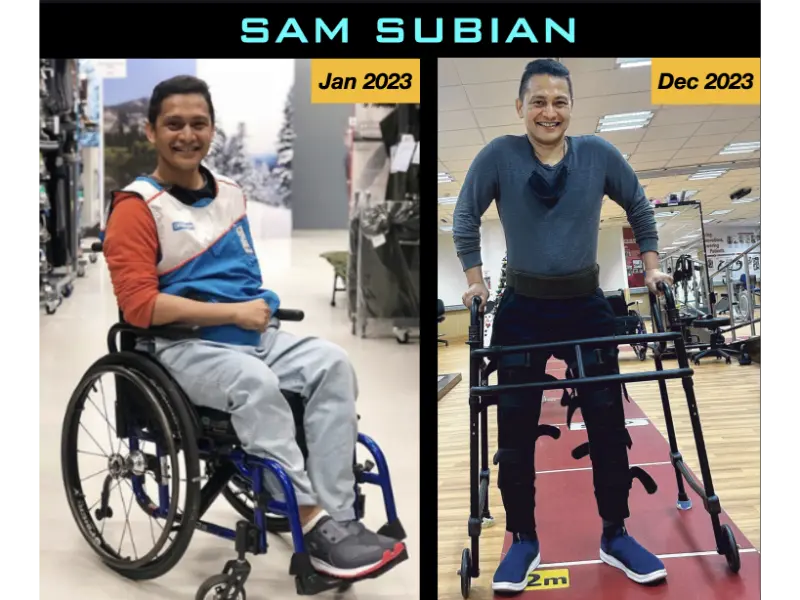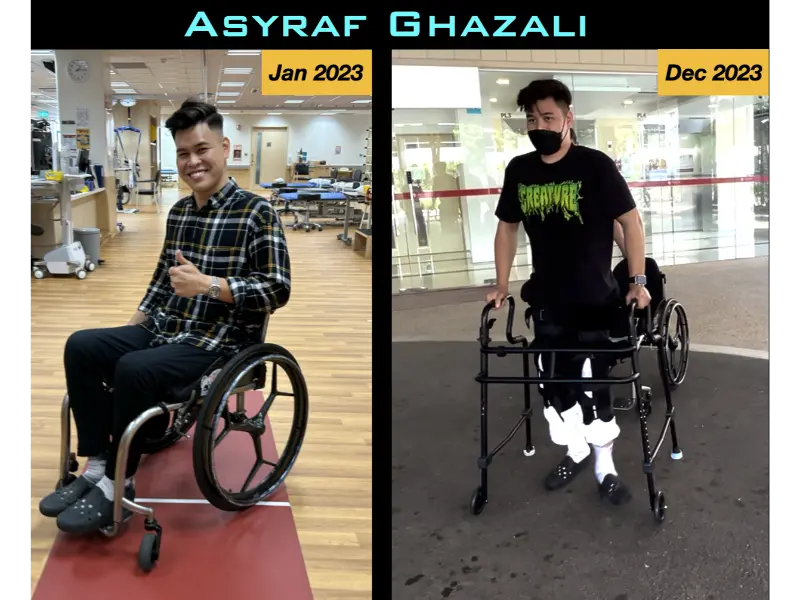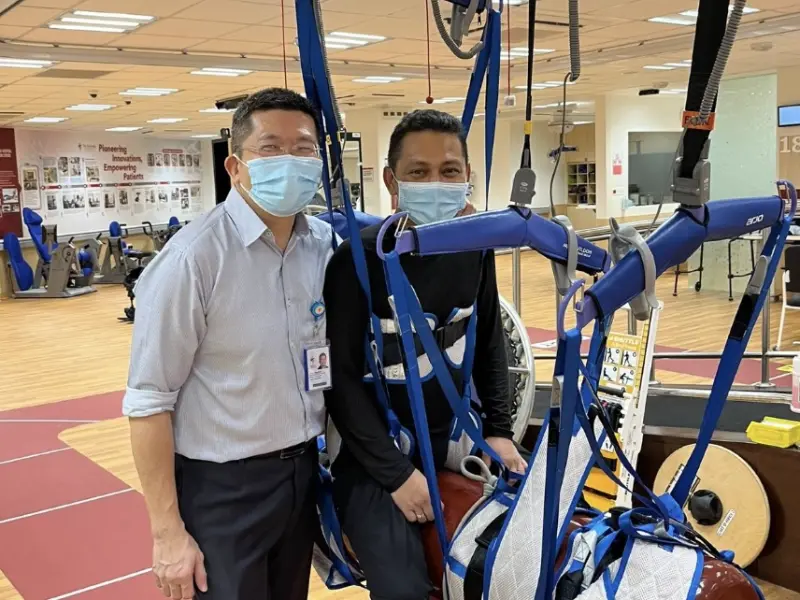- RESTORES trial, led by a team of medical professionals in Singapore, restores mobility to paralysed patients with spinal cord stimulation and physiotherapy.
- Participants in the trial, supported by their families, show significant improvements in mobility, surpassing expectations set by similar studies in the United States.
- Assoc. Prof. Wee integrates trial findings into Singapore Institute of Technology (SIT)‘s curriculum, inspiring innovative therapies in spinal cord injury rehabilitation.
A ground-breaking clinical trial spearheaded by Dr. Wan Kai Rui, a neurosurgeon of the National Neuroscience Institute (NNI), Dr. Valerie Ng, a rehabilitation doctor from Tan Tock Seng Hospital (TTSH), Associate Professor Wee Seng Kwee from SIT’s Health and Social Sciences Cluster has yielded remarkable results in restoring mobility to paralysed patients.
The trial, known as RESTORES (RESToration Of Rehabilitative function with Epidural spinal Stimulation), has defied conventional wisdom by enabling two participants to walk independently with the aid of a rollator walking frame.


RESTORES, funded by the National Medical Research Council and Ng Teng Fong Healthcare Innovation Programme, involved implanting a spinal cord stimulator in the lower back of participants, followed by seven months of intensive physiotherapy. This innovative approach taps into residual neural pathways, facilitating signal transmission between the brain and paralysed limbs.
Through a range of techniques including motor imagery, modified horse-riding therapy, and walking with wearable robotic exoskeleton suits, the participants achieved significant improvements in mobility, surpassing expectations set by similar studies conducted in the United States.
A/Prof Wee, emphasized the crucial role played by participants and their families in the trial’s success, highlighting their strong emotional and psychological support throughout the 7-month rehabilitation process.
With plans to extend the trial to additional participants in the near future and explore innovative therapies for patients with cervical spinal cord injuries, the RESTORES trial represents a significant leap forward in spinal cord injury rehabilitation.
This year, when I get to the sub-module on spinal cord injury rehabilitation, I can bring in these new findings and videos of the patients we worked with to teach and inspire our students and faculty. I will also motivate my students to identify the current gaps in rehabilitation and encourage them to conduct research to explore innovative therapies for enhanced patient outcomes.
Wee Seng Kwee, A/Prof of SIT’s Health and Social Sciences Cluster & Senior Principal Physiotherapist at TTSH
A/Prof Wee’s dedication to advancing patient care extends beyond the confines of the hospital, as he integrates research findings into SIT’s curriculum to inspire future generations of healthcare professionals to push the boundaries of rehabilitation therapy.
By bridging the gap between research and clinical practice, the RESTORES trial not only transforms the lives of participants but also paves the way for continued innovation in spinal cord injury rehabilitation.

